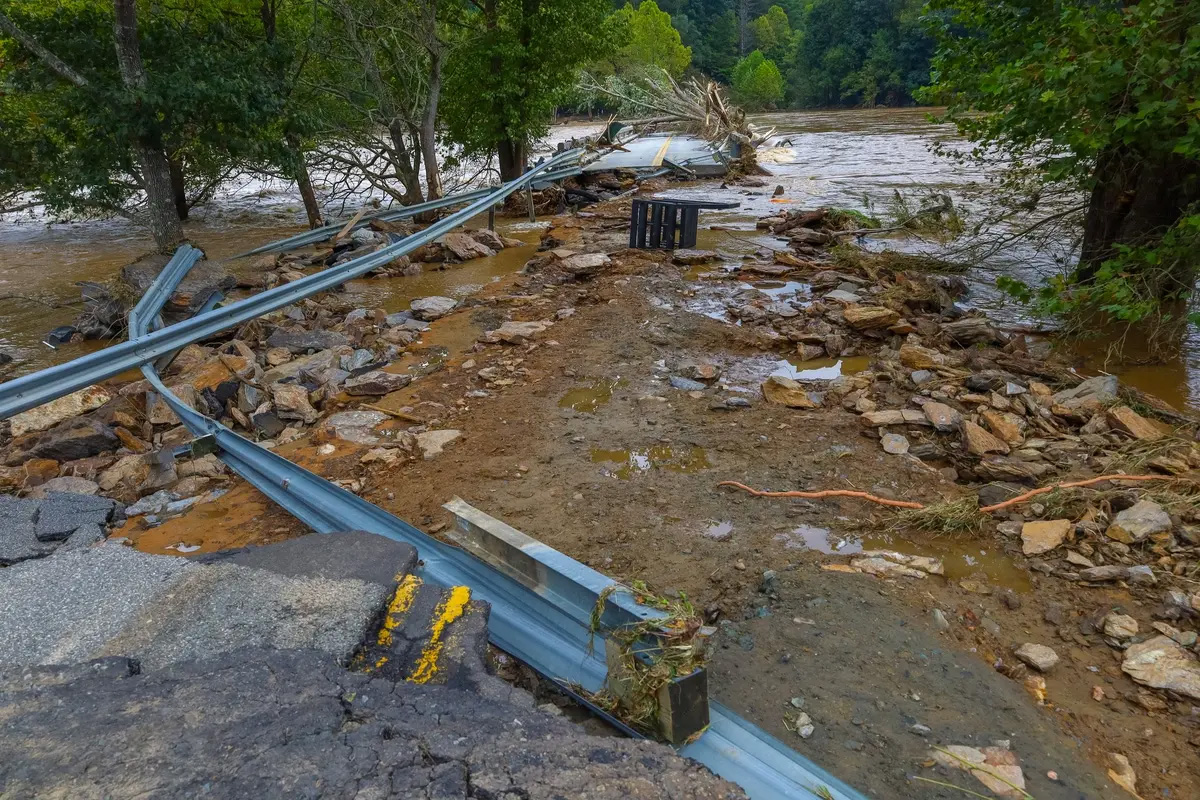News
Hurricane Helene’s mark in North Carolina might endure in unexpected ways, VCU professor says

by Will Pelfrey
With Hurricanes Helene and Milton having caused major impacts from Florida to the Carolinas this fall, recovery efforts will continue for a long time.
At Virginia Commonwealth University’s L. Douglas Wilder School of Government and Public Affairs, professor William Pelfrey Jr., Ph.D., is a specialist in homeland security/emergency preparedness and criminal justice. He has participated in relief meetings with Virginia officials who are supporting response and recovery efforts in the affected areas.
Pelfrey shared insight about some of the larger – and lasting – issues related to the situation in North Carolina.
What are your thoughts on the impacts of Hurricanes Helene and Milton?
These were two immensely powerful storms that produced major impacts. Florida escaped catastrophic damage from Hurricane Milton but still suffered substantial flooding, exacerbated by the recent impact of Helene. Houses and businesses which were damaged, or lost secure roofing during Helene were especially vulnerable during Milton. Fortunately, many Florida residents heeded evacuation orders and rode out the storm in safety.
Rural North Carolina was especially hard hit by Helene. The hurricane retained huge energy and moved north very quickly. Structures on the Atlantic and Gulf coasts are built to withstand a Category 3 hurricane. That is not the case in the mountains of North Carolina and many homes and businesses are simply gone.
How is the recovery going?
Thanks to the rapid issuance of state and federal disaster declarations, thousands of local, state and federal personnel have been deployed to damaged areas. The Federal Emergency Management Agency (FEMA) is distributing copious amounts of water, food, fuel, shelter and other necessities. They are bringing over 100 tractor trailers of supplies to North Carolina each day. I’ve participated in relief meetings with local officials in Virginia — FEMA and the Virginia Department of Emergency Management (VDEM) are working very hard to assist in response and recovery.
When will the hardest hit areas be back to normal?
They won’t ever be back to normal. Many damaged homes and businesses can be repaired or rebuilt. Hopefully they will “build back better” and mitigate future risk. Some homes and businesses, particularly in the Asheville and western North Carolina region, will never come back. The estimates for restoring power are about 95% which means that at least 5% of former power recipients are gone. There is an emergency response saying: “The last mile is the hardest.” That means the most remote locations are the hardest to assist and restore. There are still hundreds of homes in Puerto Rico that have not yet had power restored from Hurricane Irma, which hit in September of 2017! While North Carolina has much more resources and a stronger administrative infrastructure, it could easily be months or years before “the last mile” is fixed.
What is the impact of misinformation regarding the response?
One of the presidential candidates and surrogates has been spreading misinformation about the response to Hurricanes Helene and Milton with particular emphasis on the mountain region of North Carolina. That region was hit the hardest by Helene and suffered substantial damage. The lies suggest that FEMA is withholding assistance from persons in predominantly rural Republican areas. There are other baseless conspiracy theories suggesting FEMA will take people’s houses, FEMA has destroyed several neighborhoods, and other, even more ludicrous suggestions. These lies have produced some distrust of FEMA and the response even though local and state officials, both Republican and Democrat, have noted the mistruths.
Has there been any violence as a result of the misinformation?
One person brought multiple guns to a FEMA relief site after posting threatening messages on social media. That person was arrested without incident. Some FEMA personnel have been threatened and there are anecdotes about FEMA members being attacked but I have not seen notice of police action or criminal complaints. FEMA has enhanced security at some relief bases and has changed outreach approaches.
Are there long-term consequences of the misinformation?
Perhaps. Mistrust of FEMA and the state or federal government assistance mechanisms could lead some persons to not pursue available help. That could include loans, home recovery, grants, business assistance projects, infrastructure (like roads, bridges, water, and power) repair and similar. There may also be a negative consequence to the morale of FEMA and other relief workers. If someone leaves their family and comes to help those victimized by a natural disaster, then is threatened on-site, they may be reluctant to deploy in the future. In the 1970s, when U.S. soldiers returned from Vietnam, many Americans expressed revulsion towards them, believing that the military action was wrong. That hurt morale and negatively impacted recruitment for years. Lies have consequences.
This story originally appeared on VCU News.